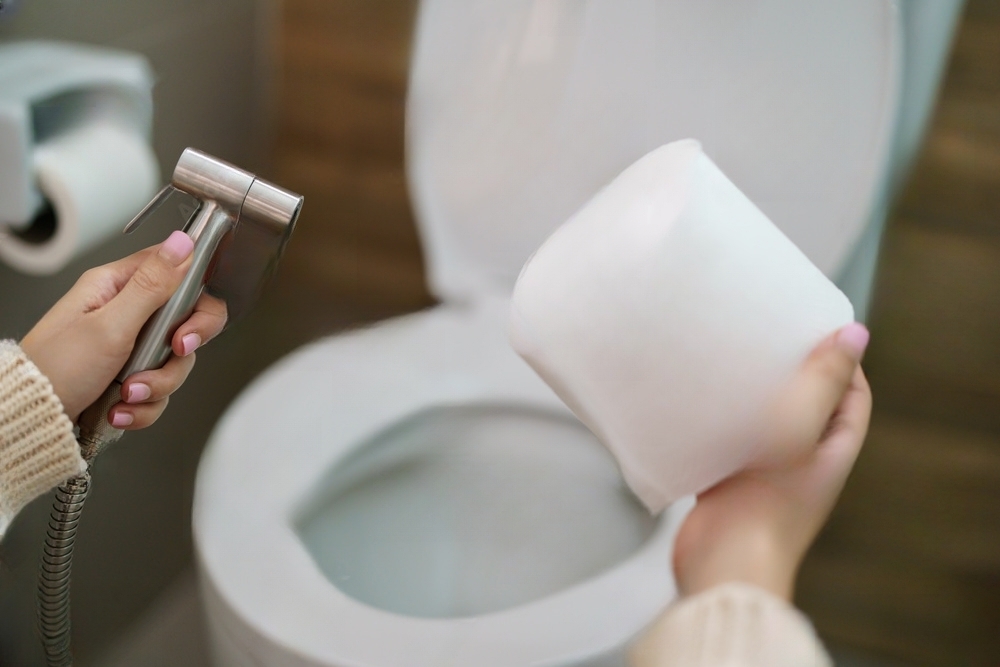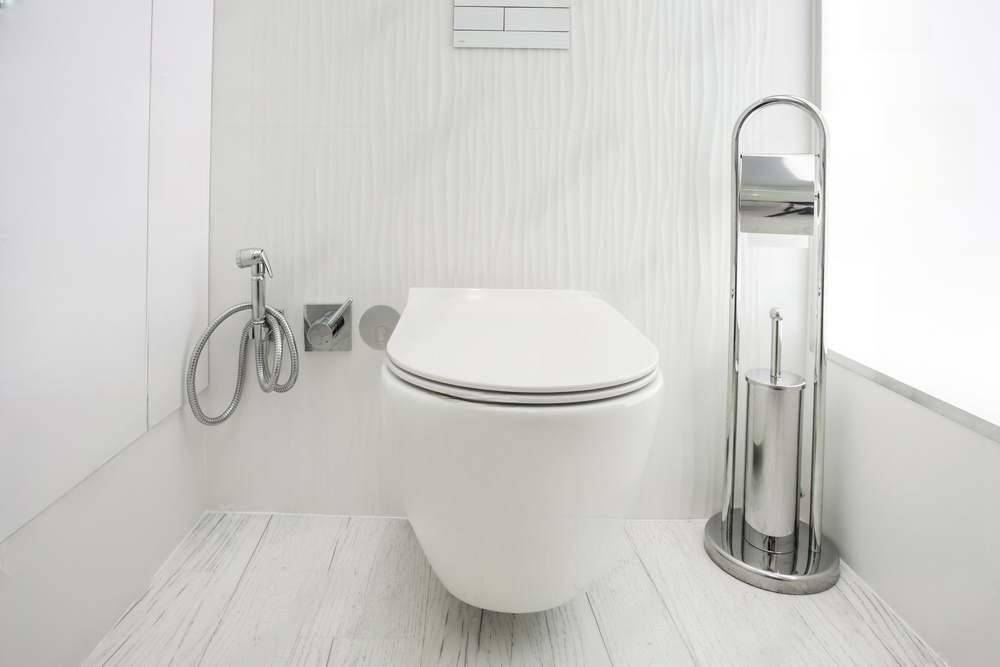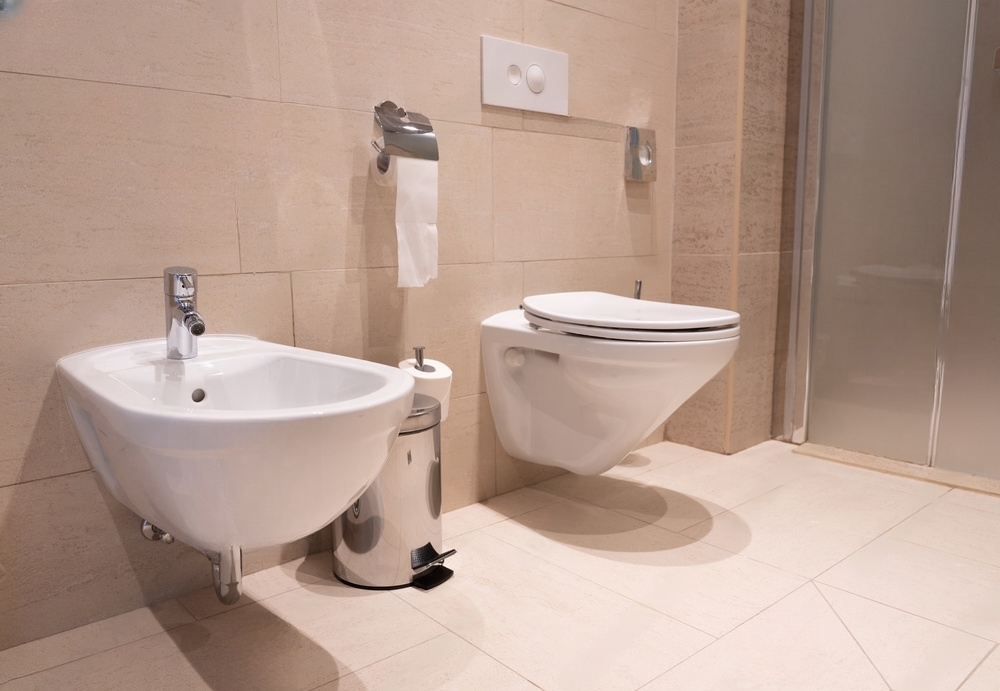Table of Contents
Are handheld bidets eco-friendly?
Handheld bidets can be considered more eco-friendly compared to other alternatives, such as traditional toilet paper or wet wipes. Here are a few reasons why handheld bidets are often considered eco-friendly:
Reduced paper consumption
By using a handheld bidet, individuals can significantly reduce their reliance on toilet paper, which contributes to deforestation and environmental impact. This reduction in paper consumption helps conserve natural resources and reduces waste.
Water efficiency
Handheld bidets typically use a small amount of water to provide effective cleaning. Compared to the water-intensive production processes involved in manufacturing toilet paper, bidets can be more water-efficient in the long run. Additionally, some bidets come with features like adjustable water pressure, allowing users to conserve water by using only what is necessary.
Biodegradable waste
When using a bidet, any residual waste that is washed away is biodegradable. This means that the waste, when properly treated, can decompose naturally without causing long-term environmental harm.
Reduced plastic waste
Handheld bidets do not generate plastic waste like wet wipes or other disposable cleaning products. By opting for a bidet, individuals can avoid contributing to the growing problem of plastic pollution.
While handheld bidets offer eco-friendly benefits, it’s important to note that their overall environmental impact may depend on factors such as water usage, energy consumption (if electrically powered), and the manufacturing processes involved. It’s recommended to look for bidets that are specifically designed with eco-friendly features and materials to maximize their sustainability.
Can I still use toilet paper if I have a bidet?

Yes, you can still use toilet paper if you have a bidet. The use of toilet paper alongside a bidet is a matter of personal preference and convenience. While bidets are effective at cleaning, some people may prefer to use a small amount of toilet paper to pat dry after using the bidet or for other purposes.
Here are a few reasons why someone might choose to use toilet paper alongside a bidet:
- Drying: After using a bidet, some individuals may prefer to use toilet paper to dry themselves. While bidets can help rinse and clean, they may not eliminate all moisture entirely. Using toilet paper can provide a final drying step for comfort and convenience.
- Habits and preferences: People may have ingrained habits and preferences for using toilet paper that they may still want to incorporate, even if they have a bidet. It’s a personal choice that allows individuals to maintain their preferred hygiene routines.
- Familiarity: Some individuals may find toilet paper more familiar and comfortable to use, particularly if they have grown up using it extensively. They may choose to continue using it alongside a bidet for a sense of familiarity and reassurance.
Ultimately, the choice to use toilet paper alongside a bidet is up to the individual. It’s worth noting that using a bidet can significantly reduce the amount of toilet paper needed, leading to cost savings and environmental benefit
Can a bidet replace toilet paper?

Yes, a bidet can effectively replace or greatly reduce the need for toilet paper. Bidets are designed to provide thorough cleaning and hygiene after using the toilet, using water to rinse the area instead of relying solely on toilet paper.
Here are some reasons why a bidet jet sprayer can be a viable alternative to toilet paper:
Enhanced cleanliness
Bidets offer a more thorough and effective cleaning compared to toilet paper alone. The gentle spray of water can help remove residue and ensure better personal hygiene.
Reduced reliance on paper products
By using a bidet attachment, you can significantly reduce your consumption of toilet paper. This reduction helps conserve resources, such as trees used for paper production, and reduces waste.
Cost savings
Over time, using a bidet sprayer for toilet can lead to cost savings by reducing or eliminating the need for toilet paper purchases. While bidet installation may have an initial cost, the long-term savings can be substantial.
Comfort and freshness
Bidets can provide a refreshing and comfortable experience. The use of water can help alleviate discomfort, particularly for individuals with sensitive skin or certain conditions.
It’s important to note that bidet handhelds do not completely eliminate the need for toilet paper in all situations. While bidets can provide effective cleaning, some individuals may still prefer to use a small amount of toilet paper for drying purposes. Additionally, in situations where bidets are not available, such as public restrooms, toilet paper remains necessary.
Ultimately, the decision to fully replace toilet paper with a bidet depends on personal preference, cultural norms, and accessibility to bidet options.
Are there any environmental benefits to using a bidet?
Yes, there are several environmental benefits to using a bidet. Here are some of the key environmental advantages:
Reduction in toilet paper usage
Bidets significantly reduce the need for toilet paper. By using water for cleaning instead of relying solely on paper products, bidets help conserve trees and reduce deforestation. The production and disposal of toilet paper contribute to environmental issues such as water consumption, energy usage, and waste generation.
Water conservation
While bidets use water for cleaning, they generally require much less water than the manufacturing process of toilet paper. The overall water footprint of bidets can be lower, especially if they are designed with water-saving features or if they promote efficient usage.
Decreased waste generation
By using a bidet, you reduce the amount of toilet paper waste generated. Traditional toilet paper is often single-use and ends up in landfills or requires energy-intensive processes for recycling. Minimizing paper waste through bidet usage helps mitigate environmental impacts associated with waste management.
Reduced plastic waste
Bidets eliminate the need for wet wipes or other disposable cleaning products that often contain plastic. These items contribute to plastic pollution, as they are frequently disposed of improperly or end up in water bodies. By opting for a bidet, you can reduce your plastic waste footprint.
Energy savings
The production process of toilet paper requires energy for harvesting, transportation, and manufacturing. By reducing the demand for toilet paper, bidets indirectly contribute to energy savings associated with paper production.
It’s important to note that the overall environmental impact of bidets can depend on factors such as water usage, energy consumption (if electrically powered), and the materials used in their production. Opting for eco-friendly bidet models, such as those designed with water-saving features or made from sustainable materials, can further enhance their environmental benefits.
Can using a bidet reduce toilet paper usage?

Yes, using a bidet can significantly reduce toilet paper usage. Bidets are designed to provide effective cleaning and hygiene by using water to rinse the area after using the toilet. By incorporating a bidet into your personal hygiene routine, you can reduce or even eliminate the need for toilet paper in many instances.
Here’s how using a bidet shataff can lead to a reduction in toilet paper usage:
- Thorough cleaning: Bidets use water to clean the area, which can be more effective in removing residue compared to using toilet paper alone. This means you may require less toilet paper for wiping and cleaning purposes.
- Minimal wiping: With a bidet, you may find that you only need to use a small amount of toilet paper for drying purposes, rather than for extensive wiping. This can significantly reduce the amount of toilet paper used per bathroom visit.
- Optional usage: Bidets provide an alternative cleansing method, but it does not mean toilet paper cannot be used alongside them. Some individuals may choose to use a small amount of toilet paper after using a bidet shattaf for additional comfort or drying, but the overall usage is still reduced.
- Occasional use: In certain situations, such as when using bidets in public restrooms or while traveling, toilet paper may still be necessary. However, the regular use of a bidet at home can still lead to a substantial reduction in toilet paper consumption.
By reducing toilet paper usage, you can contribute to environmental conservation by conserving trees, reducing waste generation, and minimizing the energy and water resources used in toilet paper production.
How do I dry off after using a bidet attachment?

After using a bidet attachment, there are several ways you can dry off. Here are a few common methods:
Drying Method | Explanation |
Toilet paper | Use a small amount of toilet paper to pat dry after using the bidet. This method is convenient and widely accessible. Consider using eco-friendly or recycled toilet paper for reduced environmental impact. |
Towel | Keep a designated towel near the bidet area specifically for drying purposes. Gently pat the area dry with the towel after using the bidet. Remember to regularly wash and replace the towel to maintain hygiene. |
Hand towel or washcloth | Similar to using a towel, have a small hand towel or washcloth dedicated to drying after bidet use. Gently pat the area dry with the towel or washcloth. Ensure regular washing to maintain cleanliness. |
Air drying | Allow the area to air dry naturally after using the bidet. This method requires more time but can be convenient and environmentally friendly. Ensure adequate ventilation in the bathroom for efficient drying. |
These methods offer various options for drying off after using a bidet sprayer attachment. Consider personal preferences, comfort, and resource availability when choosing the most suitable method for you.
Can I still use toilet paper with a bidet attachment?
Yes, you can still use toilet paper alongside a bidet attachment. The use of toilet paper is a personal preference and convenience choice, and it can be used in conjunction with a jet bidet sprayer attachment for various purposes.
Here are a few scenarios where you might choose to use toilet paper with a bidet attachment:
- Drying: After using the bidet attachment, you may prefer to use a small amount of toilet paper for drying purposes. While bidets can provide effective cleaning, some individuals find it more comfortable to use toilet paper for a final drying step.
- Personal preference: Some people have ingrained habits and preferences for using toilet paper that they may still want to incorporate, even if they have a bidet attachment. It allows individuals to maintain their preferred hygiene routine and offers a sense of familiarity.
- Minimal wiping: Although bidet attachments are designed to provide thorough cleaning, you might choose to use a small amount of toilet paper for minimal wiping after using the bidet, especially if you feel the need for additional cleanliness.
- Travel or public restrooms: In situations where bidet attachments are not available, such as when traveling or using public restrooms, toilet paper remains the primary option for personal hygiene.
Ultimately, the choice to use toilet paper alongside a bidet attachment is up to you. Some individuals may prefer to rely solely on the bidet for cleaning, while others may find it more comfortable to use a combination of bidet and toilet paper. The important thing is to choose the method or combination that best suits your needs and preferences.
Is a handheld bidet more hygienic than toilet paper?

A handheld bidet can be considered more hygienic than toilet paper for several reasons. Here’s an explanation of why a handheld bidet can offer enhanced hygiene:
Aspect | Explanation |
Thorough cleaning | Hand held bidets sprayer use water to clean the area, providing a more thorough and effective cleansing compared to using toilet paper alone. Water helps remove residue and bacteria, leaving you feeling cleaner and fresher. |
Reduced bacterial transfer | When using toilet paper, there is a risk of spreading bacteria or fecal matter if not done properly. In contrast, a handheld bidet allows for targeted and controlled water spray, minimizing the potential for bacterial transfer. |
Gentle on sensitive skin | Toilet paper can cause irritation or discomfort for individuals with sensitive skin or certain conditions. Handheld bidets offer a gentle and adjustable water spray, which can be more soothing and less abrasive than wiping with paper. |
Hygiene for hard-to-reach areas | Handheld bidets provide the advantage of reaching and cleaning areas that may be difficult to access with toilet paper alone. This is particularly beneficial for individuals with limited mobility or certain health conditions. |
Personalized water pressure | Handheld bidets often come with adjustable water pressure settings, allowing users to customize the cleaning experience according to their comfort level and hygiene needs. |
While jet sprayer bidets can offer enhanced hygiene, it’s important to note that proper technique and hygiene practices should still be followed. This includes thorough handwashing after using the bidet and regularly cleaning and maintaining the bidet device itself.
The choice between a handheld bidet and toilet paper depends on personal preference, cultural norms, and individual needs. Some people may choose to combine the use of a bidet with a small amount of toilet paper for drying, while others may opt for the bidet alone.
